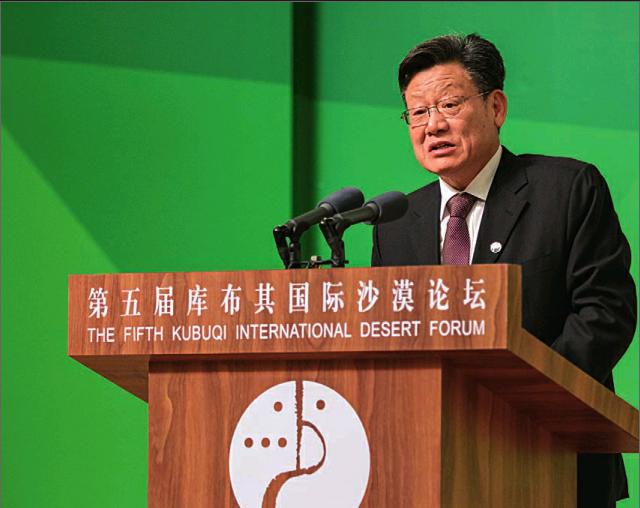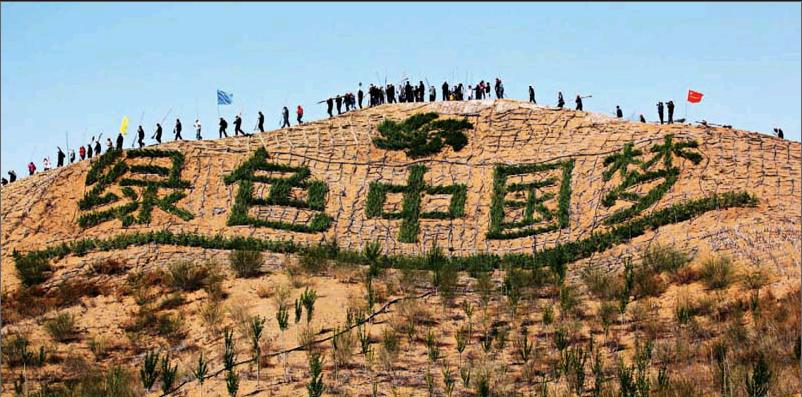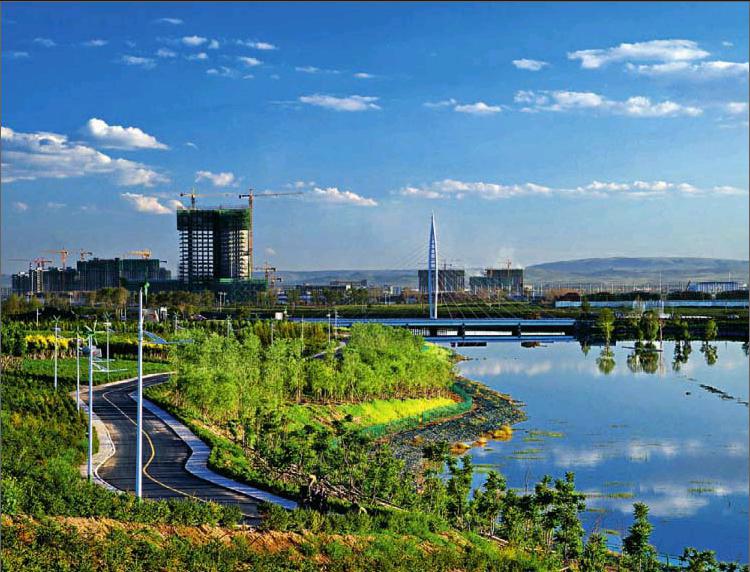Sha Zukang:Building a Green Silk Road Is a Common Responsibility
2016-01-19BystaffreportersLIWUZHOU&ZHOULIN
By+staff+reporters+LI+WUZHOU+&+ZHOU+LIN



IN an exclusive interview during the Fifth Kubuqi International Desert Forum, former Under SecretaryGeneral for Economic and Social Affairs and Secretary-General of the UN General Assembly on Sustainable Development (Rio+20) Sha Zhukang talked with our staff reporters about the Silk Road and the issue of desertification control. In his view, building a Green Silk Road is the common responsibility of all countries.
Human Activities Seriously Undermine Green Resources
Sha Zukuang endorsed the forums central theme, “Desert Ecological Civilization and Co-Building Silk Roads”as highly consistent with the demands of our times, and with the interests of several billion people living in scores of countries along the Silk Road.
Sha observed that the ancient Silk Road was for millennia an artery running through the Eurasian landmass that linked the four ancient civilizations of Mesopotamia, Egypt, China, and In- dia with those of Greece, and Rome. For more than 2,000 years countries along the Silk Road reciprocally fostered open trade, development and win-win cooperation, the fruits of which were mutually beneficial exchanges of goods, people, technology, and ideas.
“Arguably, the ancient Silk Road is a road of exchanges between civilizations, a road of commerce and economic development, and at the same time a road of peace and friendship. It has facilitated dialogues and exchanges between civilizations and also their integration, so advancing the greater prosperity and development of all countries and ethnic groups along the way. The Silk Road represents a glorious chapter in the annals of human history,” Sha said.
Sha also expressed his distress at the wars, over-exploitation, and other human activities since that have so seriously undermined green resources along the Silk Road.
“There has been serious degradation of what was formerly fertile land around the ancient Silk Road, due to widespread desertification. Raging sandstorms have obliterated the ancient towns of Shuofang and Loulan, and buried ancient Babylon, turning these originally thriving hubs into ghost towns. The ancient Silk Road, once so vibrant and resounding with the clang of camel bells, has been transformed into a desolate, silent wasteland,” Sha said.
He added that this sobering reality should act as a warning to the world that no civilization can survive, let alone achieve sustainable economic development and maintain peoples livelihoods, without a fertile ecological environment.endprint
“The Silk Road Must Be Green”
The Chinese government has put forward the “Belt and Road Initiative” in efforts to optimize development space and promote international cooperation, and to promote a new regional economic landscape.
China aims to work with other countries along the Belt and Road to build an open, inclusive, balanced framework of regional economic cooperation that is of benefit to all and which helps relevant states to form a win-win “community of shared interests” and a prosperous“community of shared destiny.”
The Belt and Road Initiative encompasses 65 countries and a total population of about 4.4 billion in its inner and outer regions. It generates an economic output of around US $21 trillion, the Belt accounting for 63 percent and the Road for 29 percent of world totals. It thus constitutes the worlds most promising economic belt.
Jointly building the Belt and Road is of fundamental and practical significance in advancing sustainable development of the global economy. It will contribute to eradicating poverty and improving the quality of peoples lives, to lessening regional strife and conflict between states, and to resisting terrorist attacks – these are our common goals. Furthermore, the initiative will help provide new and additional channels and platforms whereby countries along the Belt and Road may safeguard national interests, maintain regional stability, promote good-neighborly friendship, enhance political mutual trust, and strengthen friendly exchanges.
Sha Zukang spoke of the considerable differences in natural and geographical conditions among countries along the Silk Road. Most are landlocked and plagued with drought, desertification and other challenges. Chinas western regions are an example. Many countries in the Middle East and Central Asia also face serious ecological problems, including falling water tables, degraded grassland vegetation, atrophy of wetlands, and a consequent loss of biodiversity.
“These ecological conditions are too fragile to serve as a solid ecological basis for sustainable development of the Silk Road. Therefore, building the Belt and Road demands, first and foremost, concerted efforts to tackle these ecological crises. It is the common responsibility of all countries along the Silk Road to build a Green Silk Road, and to put in place a framework for pursuing a green economy,” Sha Zukang said.endprint
Multiple Ecological Development Forces
Sha raised several recommendations for consideration. The first was to speed up the establishment of an exchange and cooperation mechanism to strengthen ecological construction. To this end, we must constantly strengthen dialogue, exchanges, and pragmatic cooperation with countries along the Belt and Road on ecological civilization, and set up an effective cooperation mechanism with a view to establishing a global coalition of ecological governance. In particular, it is vital to establish platforms like the Kubuqi International Desert Forum where countries can share ecological management experience, showcase ecological management technologies, scale up successes in green civilization, and increase green aid for ecologically fragile countries.
Second, we should continue to strengthen technological cooperation towards developing ecological indus-tries. “Ecological development requires technological support. Ecologically fragile areas should be encouraged to learn from advanced ecological management expertise and experience, to introduce and create large scale innovative ecotechnologies, and to apply them to basic productive sectors, especially water-saving agriculture, smart animal husbandry, and integrated ecological industries. Such integrated approaches will allow for habitat restoration while achieving food self-sufficiency. They will also help eradicate poverty and to escape the vicious cycle of conflict between people and land. All this will achieve win-win ecological and economic results,” Sha said.
He hence proposes establishing ecological restoration demonstration bases or special ecological-economic zones in ecologically fragile areas. After a trial period, successful experiences can be disseminated throughout areas along the Silk Road.
Multiple forces should be encour- aged to participate in Silk Road ecological development, “This is not just state behavior in Silk Road countries; it is more important still to encourage social forces, especially enterprises, to participate in ecological development,”Sha said. Leading ecological development enterprises, such as the Elion Resources Group, have indeed displayed a strong sense of social responsibility. They should proactively implement the“going global” strategy, participate on a larger wider and higher scale in international exchanges and cooperation on ecological development, and promote ecological and economic integration along the Silk Road.endprint
We should seek to develop ecological culture and popularize the concept of ecological civilization. “I propose carrying out various forms of ecological civilization outreach activities in the Silk Road countries, particularly those in ecologically fragile areas, to create a strong ethos of ecological civilization, raise ecological awareness, and make the building of ecological civilization a conscious action along the Silk Road,” Sha said.
Raising ecological awareness, he believes, is also relevant to governments.“In 1992, we witnessed three outcomes: first, the United Nations Framework Convention on Climate Change; second, the Convention on Biological Diversity; and third, the Dialogues among United Nations. We should work hard together and make a joint effort towards new achievements.”
Relive the Glorious History of the Ancient Silk Road
The rise and fall of the ancient Silk Road is in fact a history of ecological evolution. The advancement and implementation of the Belt and Road Initiative makes building an ecological civilization a vital strategic link. That we should build an ecological Silk Road and a Green Silk Road is also the consensus of countries along it. “I believe that through coordination, the ancient Silk Road will indeed be able to realize Green Value, so achieving more human benefits and rekindling its glorious history,”Sha said.
Last September the United Nations convened a summit on the post-2015 development agenda, which entails implementation of the Sustainable Development Goals (SDGs). The emphasis is on balanced economic, social, and environmental development – the three pillars of sustainable development.
The post-2015 development agenda has also established a broader and stronger global development partnership, so energizing international development cooperation.
Goal 15 provides that member states“Protect, restore and promote sustainable use of terrestrial ecosystems, sustainably manage forests, combat desertification, halt and reverse land degradation, and halt biodiversity loss.”The UN also calls upon the international community, “by 2020, [to] combat desertification, and restore degraded land and soil, including land affected by desertification, drought and floods, and strive to achieve a land-degradation neutral world.”endprint
